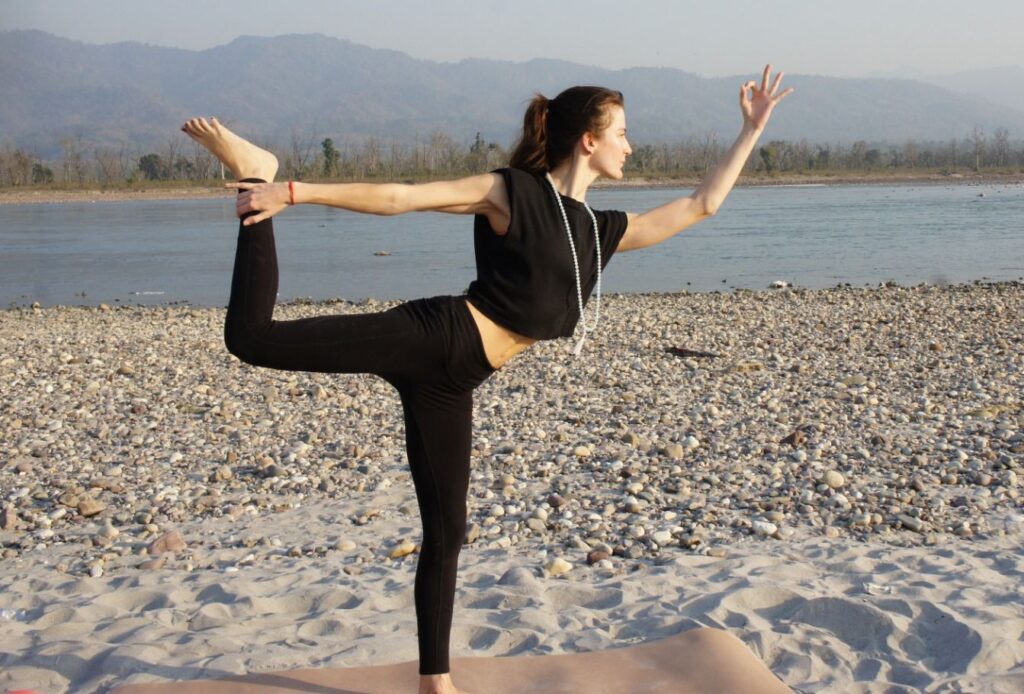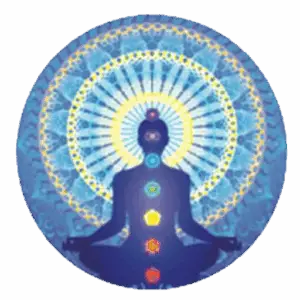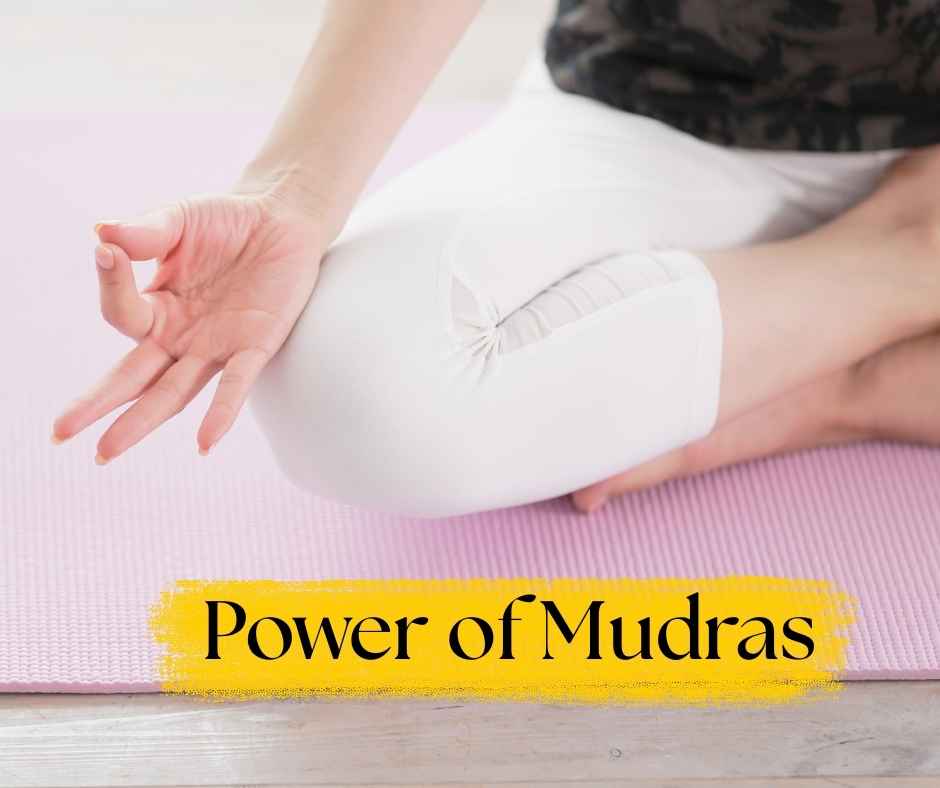
Hormones are powerful. They regulate everything from your sleep and mood to your metabolism, immunity, and fertility. When they’re in balance, you feel vibrant, steady, and at ease. When they’re not, you may feel foggy, fatigued, anxious, or out of rhythm with yourself.
But here’s something important to know: your body wants to be in balance. And with the right tools, it often finds its way back. One of the most potent and natural tools at your disposal is your yoga practice—especially when it includes targeted, mindful asanas that influence the endocrine system, the internal network of glands that produce and regulate your hormones.
In this post, you’ll learn about four traditional asanas that support hormonal health from the inside out. Each pose gently stimulates a specific gland or system—encouraging natural hormone production and inner alignment, without forcing anything.
1. Supta Baddha Konasana – Reclined Bound Angle Pose
Gland focus: Ovaries, adrenal glands, nervous system regulation
This deeply nourishing pose is a cornerstone in hormone-supportive yoga. It helps you downshift into parasympathetic nervous system activity, which is crucial for balancing cortisol and restoring reproductive function.
How to Practice Supta Baddha Konasana
- Lie on your back on a yoga mat or blanket.
- Bend your knees and bring the soles of your feet together, letting the knees fall open to the sides.
- Place blocks, cushions, or folded blankets under your thighs to support the knees and reduce strain.
- Optional: Place a bolster or pillow lengthwise under your spine for gentle chest opening.
- Let your arms rest beside your body, palms facing up.
- Close your eyes and breathe deeply for 5 to 10 minutes.
Why It Works:
This posture encourages blood flow to the pelvic region, which supports the ovaries and adrenal glands. It’s especially helpful for women experiencing menstrual irregularities, adrenal fatigue, or emotional burnout. The supported, restorative position also sends calming signals to the brain, helping lower stress hormones and promote a sense of inner ease.
2. Balasana – Child’s Pose
Gland focus: Pineal gland, melatonin regulation
Though it looks simple, Child’s Pose has a profound calming effect on the brain and endocrine system. With the forehead grounded, it brings subtle stimulation to the pineal gland, encouraging natural melatonin release and better sleep rhythms.
How to Practice Balasana
- Start in a kneeling position with your big toes touching.
- Either keep the knees together or spread them wide for comfort.
- Slowly fold forward, bringing your forehead to the mat (or a block if needed).
- Extend your arms forward for an active variation or let them rest by your sides for more relaxation.
- Allow your breath to become soft and even as you rest for 3 to 7 minutes.
Why It Works:
The gentle pressure on the forehead stimulates the area linked to the pineal gland, which controls melatonin production. Melatonin is essential for restful sleep and circadian rhythm regulation—often disrupted by modern life. Practicing Balasana regularly, especially in the evening, can help restore natural sleep patterns and promote emotional balance.
3. Bhujangasana – Snake Pose / Cobra Pose
Gland focus: Thymus gland, immune system hormone support
This heart-opening posture activates the thymus gland, which is key to immune health and hormone production related to T-cell development. It’s especially beneficial for individuals dealing with chronic stress or low energy.
How to Practice Bhujangasana
- Lie flat on your belly with legs extended behind you and tops of the feet pressing into the mat.
- Place your hands underneath your shoulders, elbows close to your ribs.
- On an inhale, gently lift your head, chest, and upper ribs—using the strength of your back, not your arms.
- Keep your elbows slightly bent, shoulders relaxed, and neck long.
- Hold the pose for 5 to 10 deep breaths, then release slowly.
Why It Works:
The lift through the chest and mild compression behind the sternum stimulates the thymus gland, which is located just behind the breastbone. This helps activate immune responses and supports the hormonal function of the gland. In addition, Bhujangasana can enhance energy levels and promote a more open, courageous mental state—qualities often diminished when hormones are out of balance.
4. Viparita Karani – Make an Opposite Pose
Gland focus: Pituitary gland, hormonal command center
Traditionally translated as “the inverted action,” Viparita Karani redirects energy upward, reversing the usual pull of gravity on your internal organs. This posture supports the pituitary gland, often called the “master gland,” which regulates many of the others in the endocrine system.
How to Practice Viparita Karani
- Lie flat on your back and bring your hands under your lower back.
- Gently lift your hips off the floor and allow your legs to rise at an angle—not fully vertical, but slightly tilted.
- Support your lower back with your hands or a block; your elbows and upper arms help keep balance.
- Allow your chin to slightly tuck toward your chest.
- Keep your breath slow and steady as you hold the pose for 1 to 3 minutes.
Why It Works:
By inverting the body and directing blood flow toward the head, this posture nourishes the brain and stimulates the pituitary gland. The pituitary plays a key role in managing the thyroid, adrenal glands, reproductive hormones, and growth regulation. Practicing Viparita Karani helps reset the hormonal hierarchy, promoting balance and clarity throughout the endocrine system. It’s also great to drain the lymphatic system.
Tips for a Hormone-Supportive Yoga Practice
- Breathe consciously. Hormonal healing is not just about posture—it’s about how you breathe while you move and rest.
- Practice regularly. Even short daily sessions (15–30 minutes) can yield real results.
- Honor your energy. Some days, you may need to rest more. That’s okay. Yoga meets you where you are.
- Incorporate pranayama. Practices like Nadi Shodhana (energy channel cleansing) and Bhramari (humming bee technique) can help calm the nervous system and support hormonal rhythm.
- Track your cycle or hormonal symptoms. See how your body responds over time, and adjust your practice accordingly.
You don’t have to push, force, or manipulate your body into balance. Through the subtle yet powerful effects of these four asanas, you create a healing space—one where your endocrine system can recalibrate naturally.
Whether you’re addressing fatigue, irregular cycles, poor sleep, or low immunity, your yoga practice can be part of your healing path. Each breath, each posture, is a message to your body: “You are safe. You are supported. You can restore.”
This is the quiet power of yoga—and it’s available to you anytime you step on the mat.







